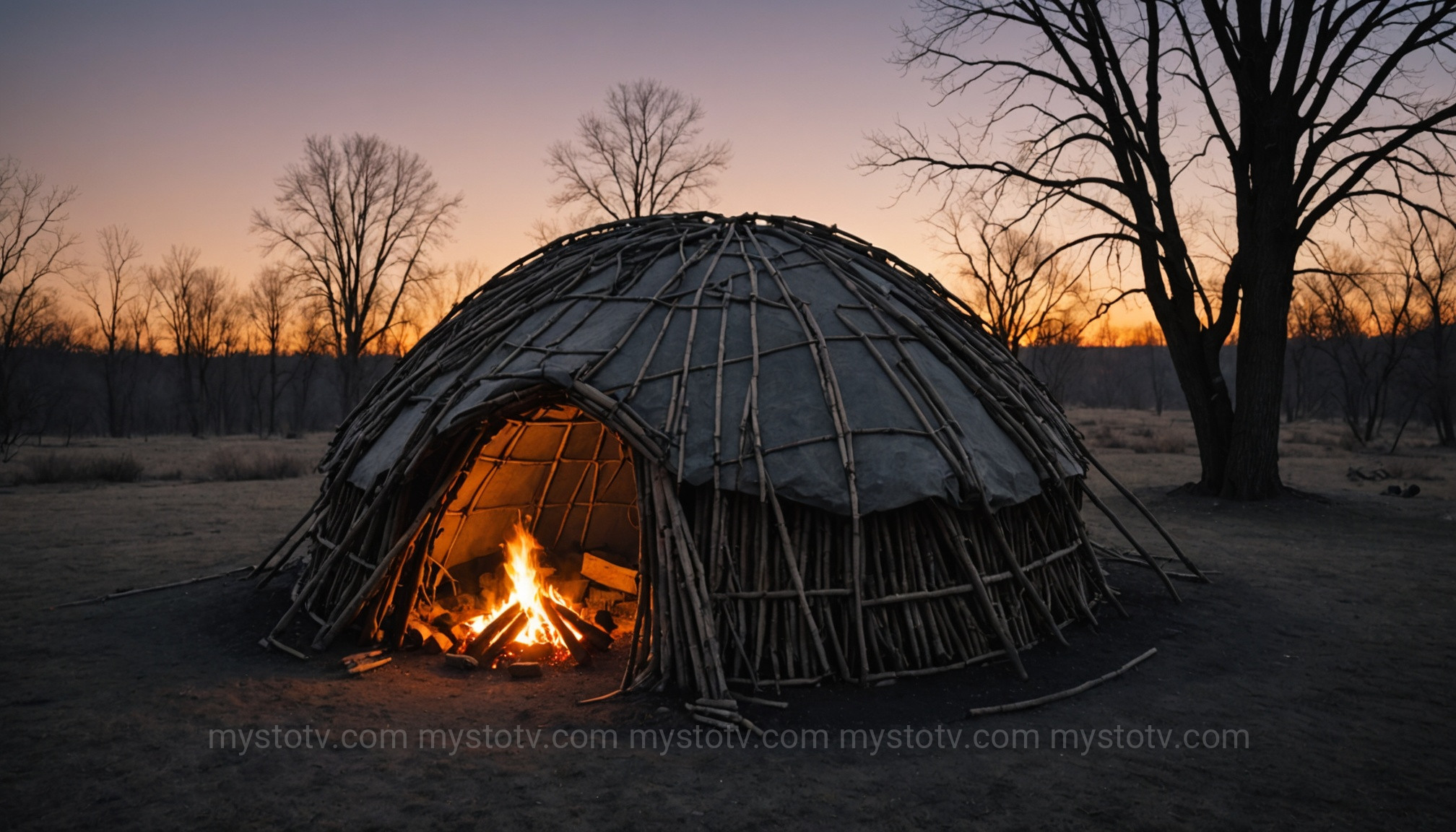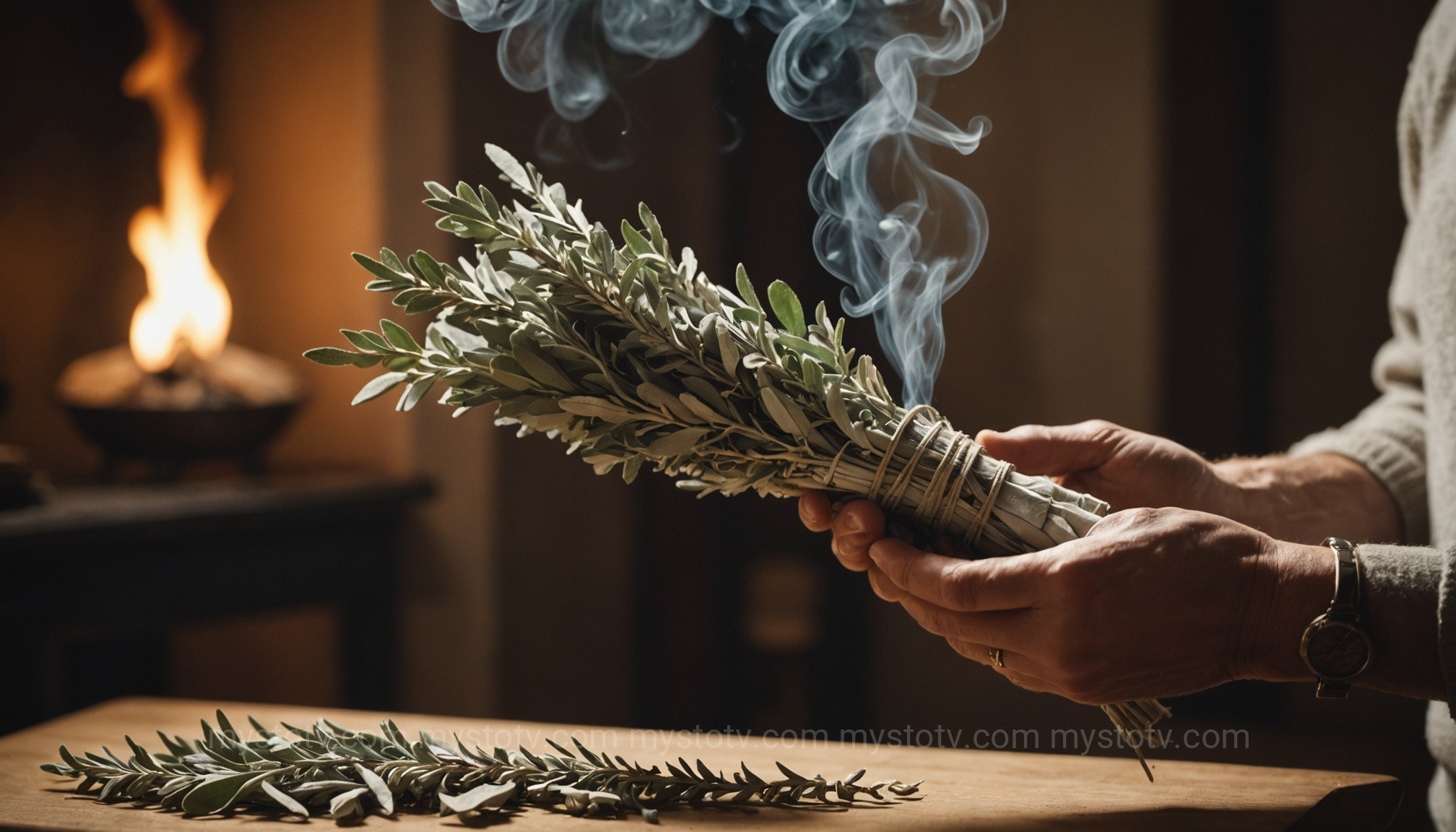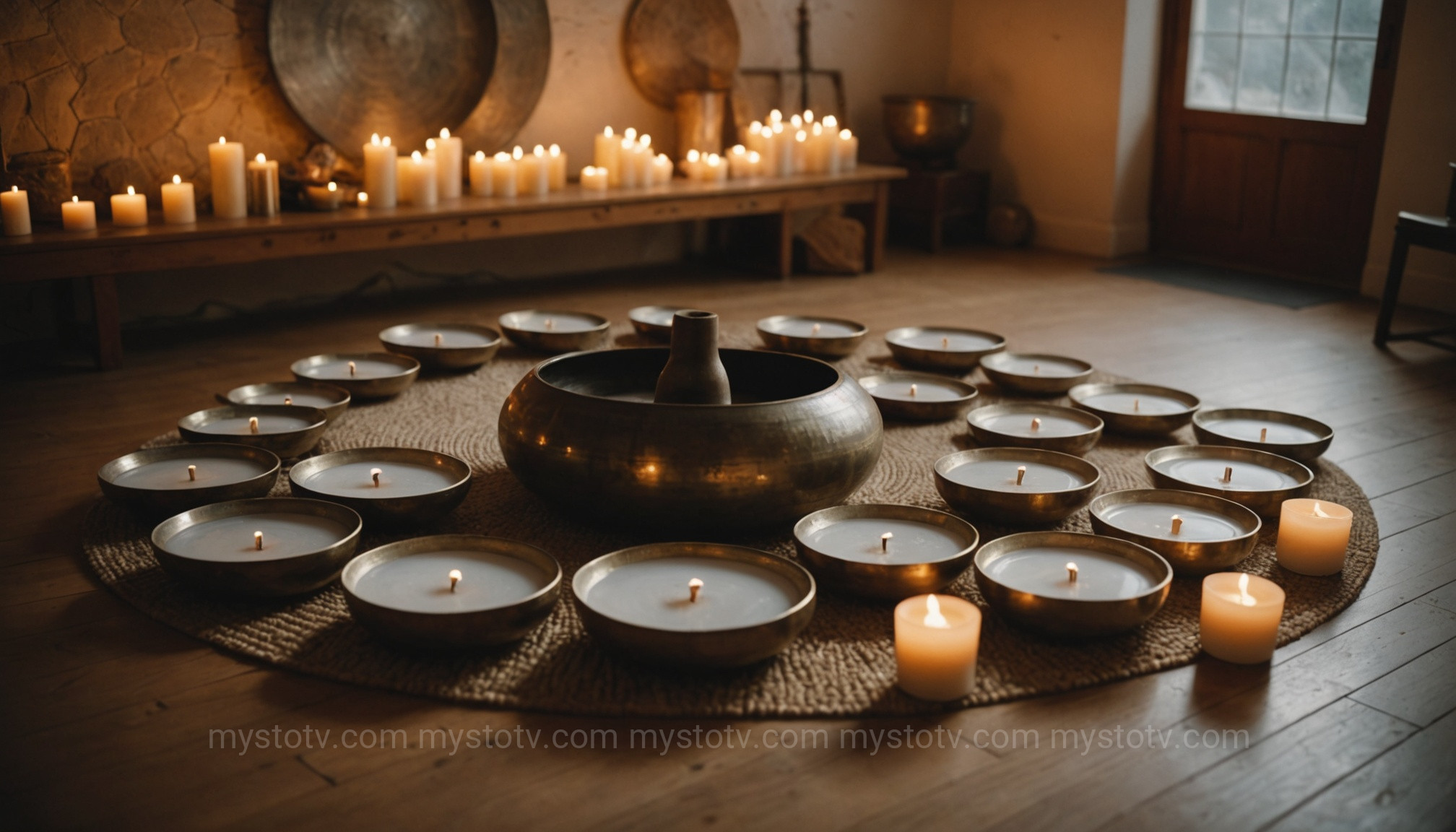I remember my first time at a sound bath. Lying on a yoga mat in a dimly lit room, I was skeptical. How could gongs and crystal bowls possibly do anything more than a good playlist? But as the waves of sound washed over me, something shifted. The tension in my shoulders eased, and my chattering mind grew quiet. It wasn't magic, but it was profoundly calming and restorative. This personal experience opened a door to a deeper curiosity about the powerful, ancient traditions of healing that exist beyond modern medicine. It led me to explore the rich world of spiritual healing ceremonies, practices that have provided comfort, clarity, and connection for communities for millennia and continue to do so today.
Contents
- 1 Understanding the Core Principles of Spiritual Healing Ceremonies
- 2 Plant Medicine: An Exploration of Botanical Spiritual Healing Ceremonies
- 3 Purification and Renewal: Cleansing and Sweat Lodge Spiritual Healing Ceremonies
- 4 Vibrational Harmony: The Power of Sound in Spiritual Healing Ceremonies
- 5 The Modern Revival and Future of Spiritual Healing Ceremonies
Understanding the Core Principles of Spiritual Healing Ceremonies
At their heart, most spiritual healing ceremonies operate on a few core principles that transcend cultural and geographical boundaries. They are not merely symbolic acts; they are structured experiences designed to facilitate a shift in consciousness and promote holistic well-being. These ceremonies often create a "sacred space," a container separate from ordinary life where participants feel safe enough to be vulnerable and open to transformation. This is achieved through specific rituals, such as casting a circle, calling in directions, or burning sacred herbs. The intention is to align the individual's physical, emotional, mental, and spiritual bodies, addressing imbalances that may manifest as illness, distress, or a sense of disconnection.
A key analytical point is that the efficacy of these spiritual healing ceremonies often hinges on the combination of intention, community, and altered states of perception. The shared intention of the group creates a powerful energetic field. The presence of a community provides support and witnesses the individual's journey, reinforcing the healing process. Finally, elements like chanting, drumming, or the use of plant medicines can induce non-ordinary states of consciousness, allowing individuals to access deeper parts of their psyche, release suppressed emotions, and gain profound insights that are not readily available in their day-to-day mental state. This multi-layered approach is why these practices remain profoundly relevant in a world searching for deeper meaning and connection.
Plant Medicine: An Exploration of Botanical Spiritual Healing Ceremonies
Perhaps the most widely discussed—and often controversial—category of spiritual healing ceremonies involves the ceremonial use of psychoactive plants. These are not recreational activities but deeply sacred rituals guided by trained facilitators or shamans. The plants are considered teachers or spirits that guide participants through a process of profound psychological and spiritual inquiry. The goal is often to confront personal shadows, heal past trauma, and receive guidance on one's life path.

The Ayahuasca Ceremony
Originating in the Amazon basin, the Ayahuasca ceremony is one of the most powerful spiritual healing ceremonies centered on a plant teacher. The brew, a combination of the Banisteriopsis caapi vine and the leaves of the Psychotria viridis shrub, is known for inducing intense visions and deep emotional purges. Guided by the icaros (sacred songs) of a trained shaman (curandero), participants navigate inner landscapes to confront deep-seated fears and traumas. The healing is often described as a spiritual "rebirth" or a deep system cleanse, offering perspectives that can fundamentally change one's relationship with themselves and the world.
The Peyote Ceremony
Central to the Native American Church, the Peyote ceremony is a sacred all-night prayer meeting. The small, spineless cactus, which contains mescaline, is considered a holy sacrament that facilitates communication with the Great Spirit. Held in a tipi around a sacred fire, the ceremony is led by a "Roadman" and involves prayer, singing, and drumming. Unlike the often-tumultuous journey of Ayahuasca, the Peyote ceremony is typically more gentle and heart-centered, focused on fostering community, gratitude, and a direct, personal connection to the divine. This is one of the most revered spiritual healing ceremonies in North America.
Purification and Renewal: Cleansing and Sweat Lodge Spiritual Healing Ceremonies
Many global traditions emphasize the importance of purification as a prerequisite for spiritual health. These spiritual healing ceremonies are designed to cleanse the participant of physical, emotional, and energetic toxins, creating a state of clarity and renewal. The methods often involve the fundamental elements of fire, water, earth, and air to restore balance and harmony within the individual.
The Sweat Lodge (Inipi)

The sweat lodge, or Inipi in the Lakota tradition, is an ancient and intense purification ceremony. It is a dome-shaped structure symbolizing the womb of Mother Earth. Participants enter the pitch-black lodge, and red-hot stones ("grandfathers") are brought in from a sacred fire and placed in a central pit. Water is poured over the stones, creating a cloud of intensely hot steam. The ceremony is conducted in rounds of prayer, drumming, and song, with each round dedicated to a specific direction or intention. The physical ordeal of the heat and darkness pushes participants beyond their perceived limits, leading to emotional release, profound visions, and a deep sense of spiritual cleansing.
Smudging Rituals
Smudging is one of the most accessible spiritual healing ceremonies, practiced by various indigenous cultures worldwide. The ritual involves burning sacred herbs, such as white sage, cedar, sweetgrass, or palo santo, and wafting the smoke over a person, object, or space. The smoke is believed to attach to negative energy and, as it dissipates, carry that unwanted energy away. From a scientific perspective, burning sage has been shown to have potent antimicrobial and antibacterial properties, literally cleansing the air. Spiritually, it's a practice of resetting the energetic environment, promoting peace, and preparing a space for prayer or meditation. This form of cleansing is a key part of many rituals.

Vibrational Harmony: The Power of Sound in Spiritual Healing Ceremonies
The principle that everything in the universe is in a state of vibration is ancient, and it forms the basis of sound healing. These spiritual healing ceremonies use specific frequencies and harmonics to entrain the brain into meditative states and bring the body’s own vibrations back into a state of harmony. Sound is a powerful tool for bypassing the analytical mind and accessing deeper states of relaxation and healing.
Gong and Crystal Bowl Sound Baths

A modern yet powerful evolution of ancient practices, a sound bath is an immersive, full-body listening experience. Participants lie down and simply receive the sounds produced by instruments like gongs, Tibetan singing bowls, and crystal bowls. The complex overtones and rich resonance of these instruments can calm the nervous system, reduce anxiety, and facilitate a state of deep meditation. The vibrations are not just heard but are also felt physically in the body, which proponents believe can help release energetic blockages and promote cellular-level healing.
Kirtan and Sacred Chanting
Kirtan is a call-and-response chanting practice from the Bhakti yoga tradition of India. It is a spiritual healing ceremony that uses sacred mantras to open the heart and quiet the mind. Unlike a performance, the focus in Kirtan is on participation. A leader sings a line of the mantra, and the group sings it back. The collective energy of the group, combined with the vibration of the ancient Sanskrit words and simple melodies, creates a powerful sense of unity and devotional bliss. It is a joyful and accessible way to experience the healing power of one's own voice and connect with a community in a shared, uplifting experience.
The Modern Revival and Future of Spiritual Healing Ceremonies
In our fast-paced, digitally-saturated world, there is a growing hunger for authentic connection, meaning, and holistic well-being. This has led to a significant revival and adaptation of traditional spiritual healing ceremonies. They are no longer confined to remote indigenous communities but are being sought out by people from all walks of life, integrated into wellness retreats, therapy practices, and community centers worldwide.
The analysis here points to a cultural shift. As mainstream science, particularly in fields like neuroscience and psychology, begins to validate the benefits of mindfulness, meditation, and even the therapeutic potential of psychedelics (as seen in studies from institutions like Johns Hopkins on psilocybin), the gap between "ancient wisdom" and "modern science" is narrowing. The future of these ceremonies will likely involve a delicate balance: preserving the cultural integrity and sacredness of these ancient practices while making them accessible and safe for a modern audience. This requires deep respect, proper training, and a focus on ethical facilitation to ensure these profound traditions continue to offer healing for generations to come. The enduring appeal of spiritual healing ceremonies lies in their ability to address a fundamental human need that technology and modern life often neglect: the need to heal our inner world.
Frequently Asked Questions (FAQ)
1. Are spiritual healing ceremonies safe?
Safety depends heavily on the type of ceremony and, most importantly, the integrity and training of the facilitator. Practices like sound baths and smudging are generally very safe. More intense ceremonies, such as sweat lodges or those involving plant medicines like Ayahuasca, carry inherent risks. It's crucial to ensure the guide is experienced, has a strong lineage or proper training, and prioritizes participant safety with thorough screening and support.
2. How do I find a reputable guide or facilitator?
Finding a reputable guide requires careful research. Word-of-mouth from a trusted source is often the best way. Look for facilitators who are transparent about their training, lineage, and safety protocols. Be wary of those who make grandiose claims, charge exorbitant prices, or lack a connection to an authentic tradition. A good facilitator will be willing to answer all your questions and ensure you feel safe and prepared.
3. What's the difference between spiritual healing and religious practice?
While there can be overlap, they are fundamentally different. Religion typically involves a structured system of belief in a specific deity or deities, with established dogmas and doctrines. Spiritual healing, on the other hand, is often more experiential and personal. It focuses on the individual's direct connection to their inner self, nature, or a universal life force, without necessarily subscribing to a formal religious institution. Many spiritual healing ceremonies are rooted in animistic or shamanic worldviews that predate organized religion.
References
- Griffiths, R.R., et al. (2016). "Psilocybin produces substantial and sustained decreases in depression and anxiety in patients with life-threatening cancer: A randomized double-blind trial." Journal of Psychopharmacology, 30(12), 1181–1197. Sourced from Sage Journals.